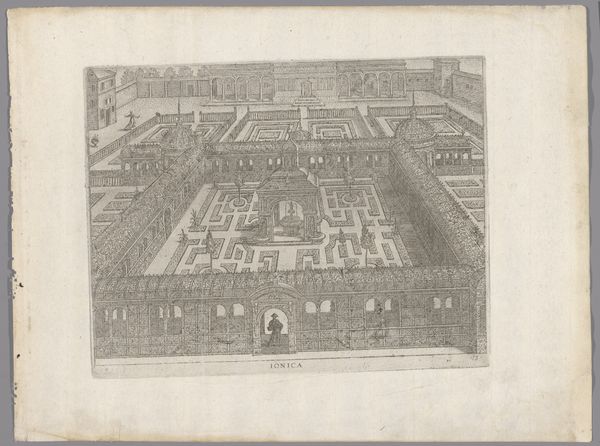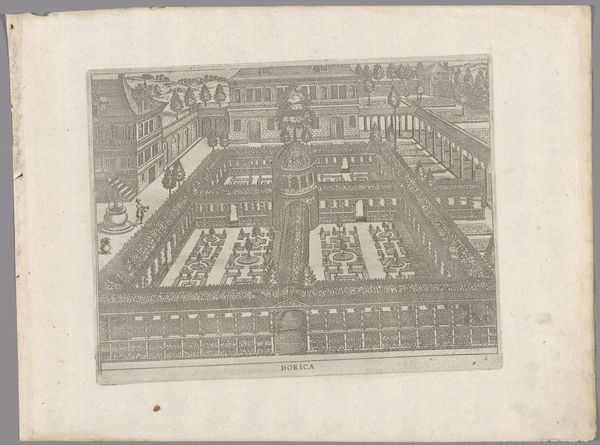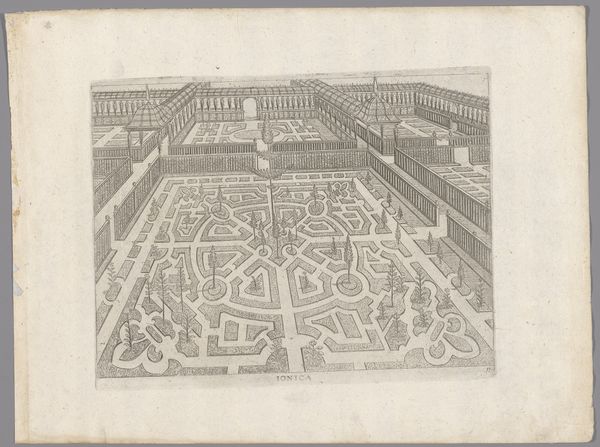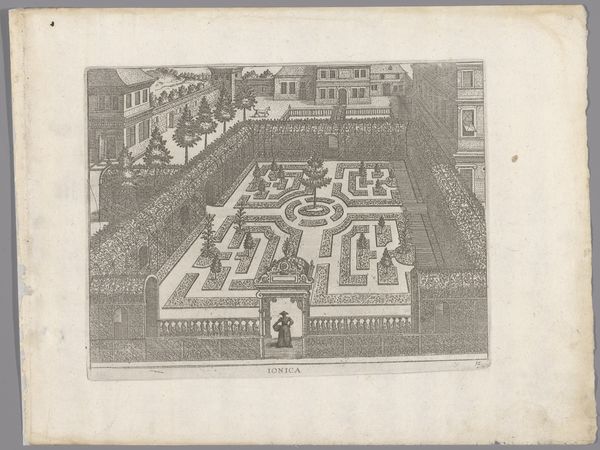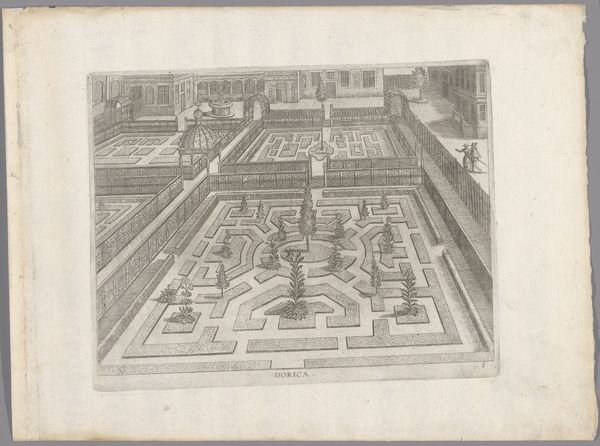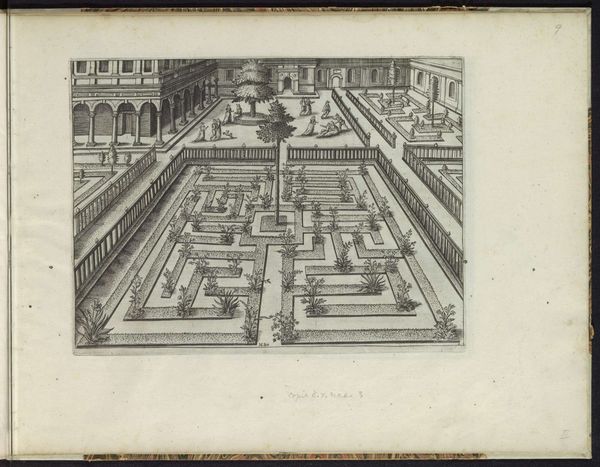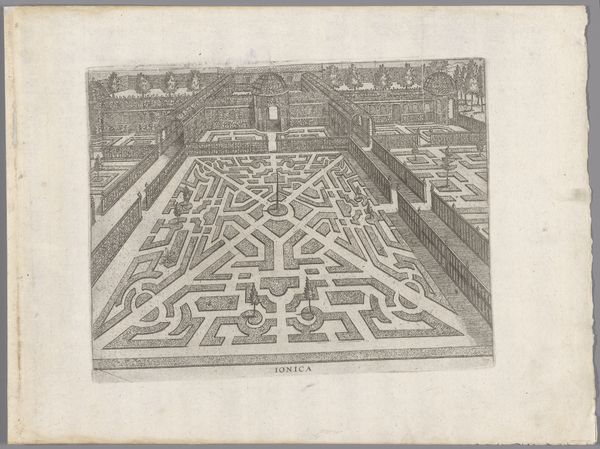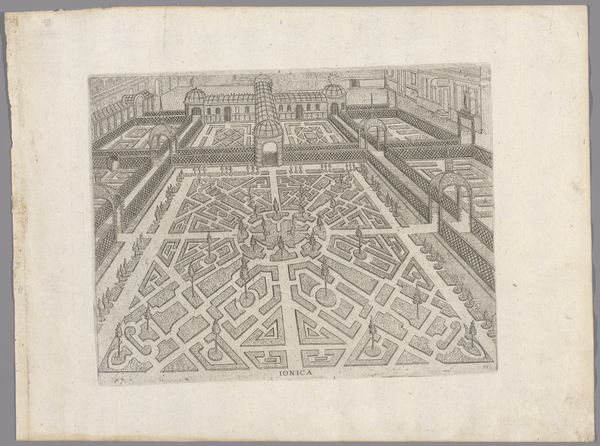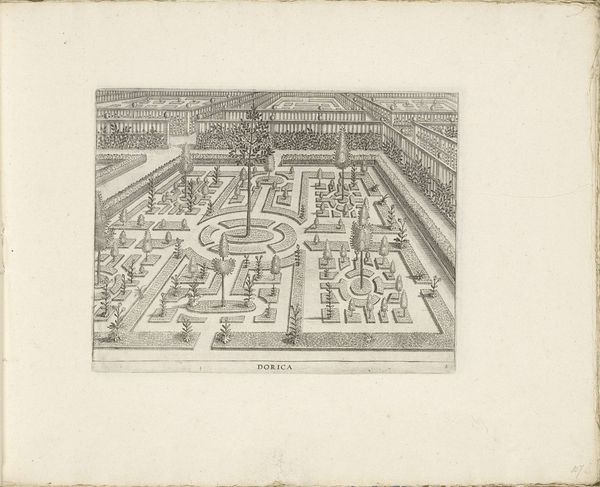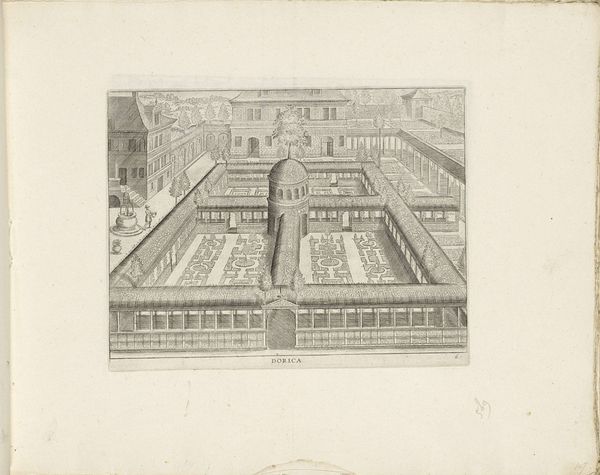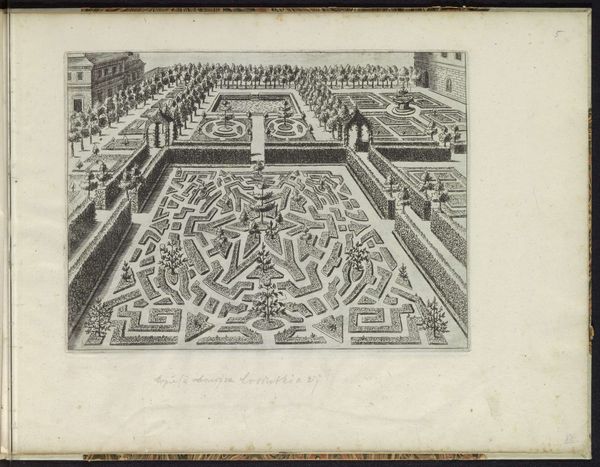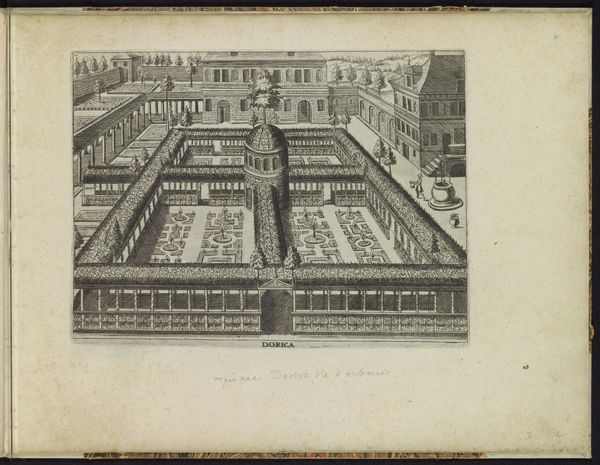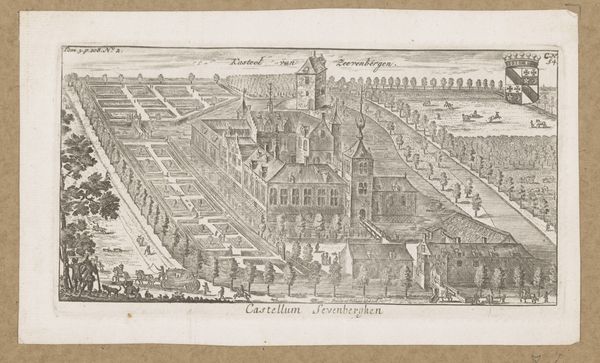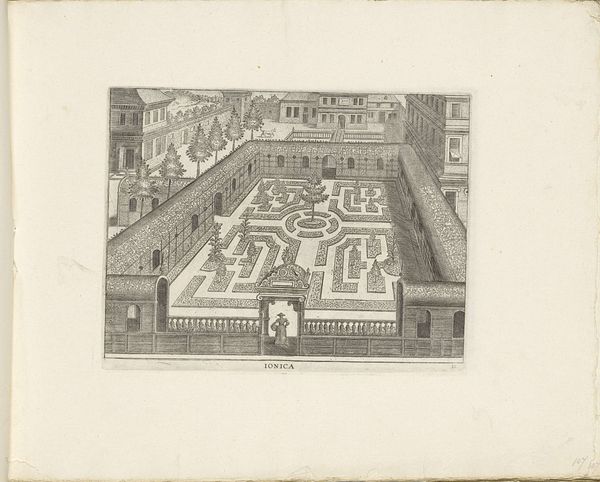
Tuin met een parterre omgeven door een dubbele rij gangen van traliewerk 1583
0:00
0:00
drawing, print, engraving, architecture
#
drawing
# print
#
landscape
#
geometric
#
line
#
cityscape
#
italian-renaissance
#
engraving
#
architecture
Dimensions: height 195 mm, width 250 mm
Copyright: Rijks Museum: Open Domain
Curator: This delicate engraving, held here at the Rijksmuseum, is titled "Tuin met een parterre omgeven door een dubbele rij gangen van traliewerk," which translates to "Garden with a parterre surrounded by a double row of trellised passageways." It was created around 1583 by an anonymous artist. Editor: My initial impression is one of extraordinary order. Every line seems perfectly placed, dictating how one should move through this space. It's… a very controlled, curated existence. Curator: Precisely. These geometric gardens were more than just decorative; they represented a mastery over nature, reflecting a humanist ideal that the human intellect could shape and improve the world, even nature itself. Editor: I'm fascinated by the labor that went into creating both the actual garden and the engraving itself. Think of the physical effort of maintaining these precisely shaped hedges and pathways! And then the meticulous, painstaking work of the engraver, translating that into this print. The cost and skill to perform that would have meant a pretty select audience. Curator: Absolutely. The garden embodies the concept of the hortus conclusus – the enclosed garden, often symbolic of purity, paradise, or, in some interpretations, the Virgin Mary. It presents an idealized world. The carefully delineated lines and forms offer spiritual resonances – what is separated from the natural, and what is cultivated or not? Editor: The very act of creating an ordered, geometric space becomes a symbol in itself: control, status, a testament to available labor and resources. The clean lines hide, perhaps, the human sweat required. It prompts a lot of questions about access and power. Curator: I agree, looking at it more closely, even the people appear somewhat diminutive; and the dog wandering the grounds lends this perfect place an aspect of liveliness but is dwarfed by these vast and cultivated shapes and designs. The visual and emotional interplay speaks volumes. Editor: Looking at the architecture framing it I can really see this from another perspective now: a meditation on production, status, and human imposition, but a compelling insight into the priorities of the elite class in 1583! Curator: Indeed, this print leaves us considering gardens not merely as spaces of leisure, but sites pregnant with symbolic meaning.
Comments
No comments
Be the first to comment and join the conversation on the ultimate creative platform.
